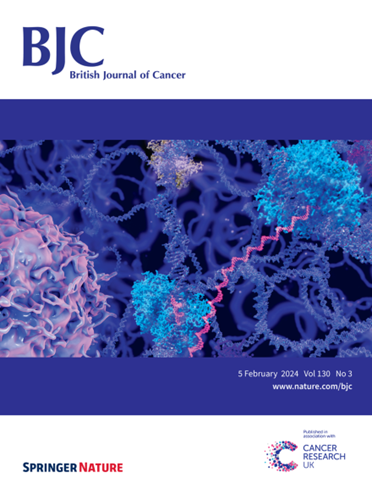Y-90树脂微球(SIRT)选择性内照射治疗对酪氨酸激酶抑制剂(TKI)治疗耐药的胃肠道间质瘤(GIST)肝转移。
IF 6.4
1区 医学
Q1 ONCOLOGY
引用次数: 0
摘要
背景:GIST的肝转移可能是进展的主要部位,并且对可用的酪氨酸激酶抑制剂(TKIs)具有耐药性。选择性内放射治疗(SIRT)提供高达200 Gy的肿瘤内放射治疗。我们分析了一个连续患者队列的肝脏无进展生存期(H-PFS)。方法:26例活检证实肝转移的GIST患者(中位年龄57.6岁)接受SIRT治疗。所有患者均有RECIST记录的肿瘤进展,24/26例患者接受了多达4个疗程的预处理。突变状态为“四重野生型”(q-wt, n = 5), KIT外显子11/9/13 (n = 15/4/1例)和PDGFRα (n = 1)。本回顾性分析前瞻性保存数据库的中位随访时间为33.6个月。结果:中位H-PFS为16个月(范围,4-54+个月,95% CI 6.5-25.4个月),SIRT后OS为28个月(95% CI 17.2-28.7个月)。在“q-wt”患者25个月时观察到最佳H-PFS(范围,6+-54个月,95% CI 16.2-33.8个月)。KIT外显子11突变加上继发性突变的最差结果为7个月(范围,4-33个月,95% CI, 4.2-9.8个月)。结论:90Y-SIRT是对TKI治疗耐药的GIST肝转移患者的有效治疗方法。在“q-wt”GIST患者中,SIRT是一线使用的选择。本文章由计算机程序翻译,如有差异,请以英文原文为准。

Selective internal radiation with Y-90 resin microspheres (SIRT) for liver metastases of gastro-intestinal stromal tumors (GIST) resistant to tyrosine kinase inhibitor (TKI) therapy
Hepatic metastases of GIST might be the dominant site of progression and resistant to available tyrosine kinase inhibitors (TKIs). Selective internal radiation therapy (SIRT) offers treatment by intratumoral radiation up to 200 Gy. We analyzed the hepatic progression-free survival (H-PFS) in a consecutive patient cohort. Twenty-six patients (median age 57.6 years) with biopsy proven liver metastases of GIST were treated by SIRT. All had RECIST documented tumor progression, and 24/26 patients had up to four lines of pretreatment. Mutational status was ‘quadruple wildtype’ (q-wt, n = 5), KIT exon 11/9/13 in n = 15/4/1 cases and PDGFRα (n = 1). Median follow-up of this retrospective analysis of a prospectively kept database is 33.6 months. Median H-PFS was 16 months (range, 4–54+ months, 95% CI 6.5–25.4 months) and OS after SIRT was 28 months (95% CI 17.2–28.7 months). Best H-PFS was observed in patients with ‘q-wt’ at 25 months (range, 6+–54 months, 95% CI 16.2–33.8 months). The worst outcome was for KIT exon 11 mutations plus secondary mutations with 7 months (range, 4–33 months, 95% CI, 4.2–9.8 months). 90Y-SIRT is a potent treatment for patients with liver metastases of GIST resistant to TKI therapy. In patients with ‘q-wt’ GIST, SIRT is an option for first-line use.
求助全文
通过发布文献求助,成功后即可免费获取论文全文。
去求助
来源期刊

British Journal of Cancer
医学-肿瘤学
CiteScore
15.10
自引率
1.10%
发文量
383
审稿时长
6 months
期刊介绍:
The British Journal of Cancer is one of the most-cited general cancer journals, publishing significant advances in translational and clinical cancer research.It also publishes high-quality reviews and thought-provoking comment on all aspects of cancer prevention,diagnosis and treatment.
 求助内容:
求助内容: 应助结果提醒方式:
应助结果提醒方式:


